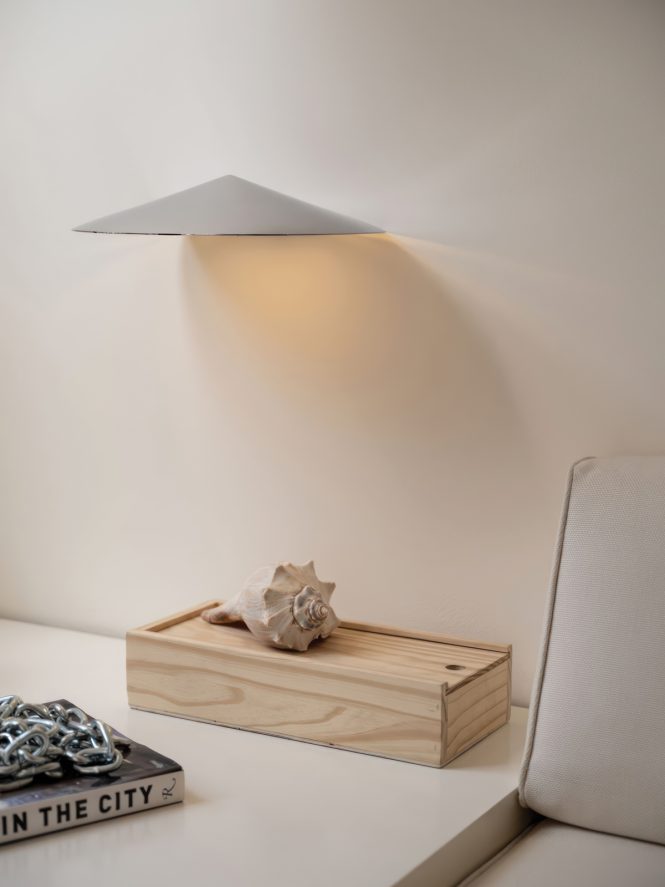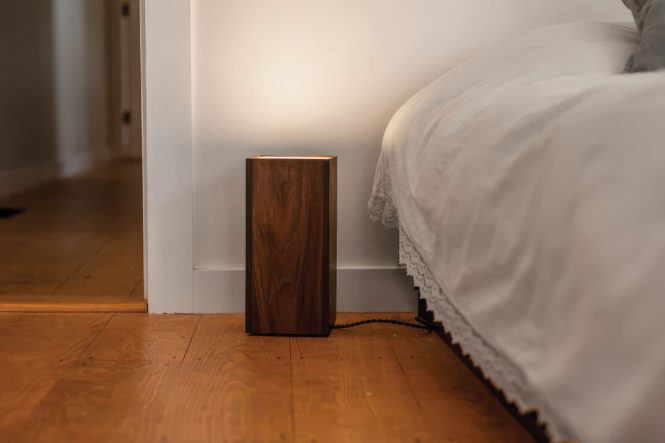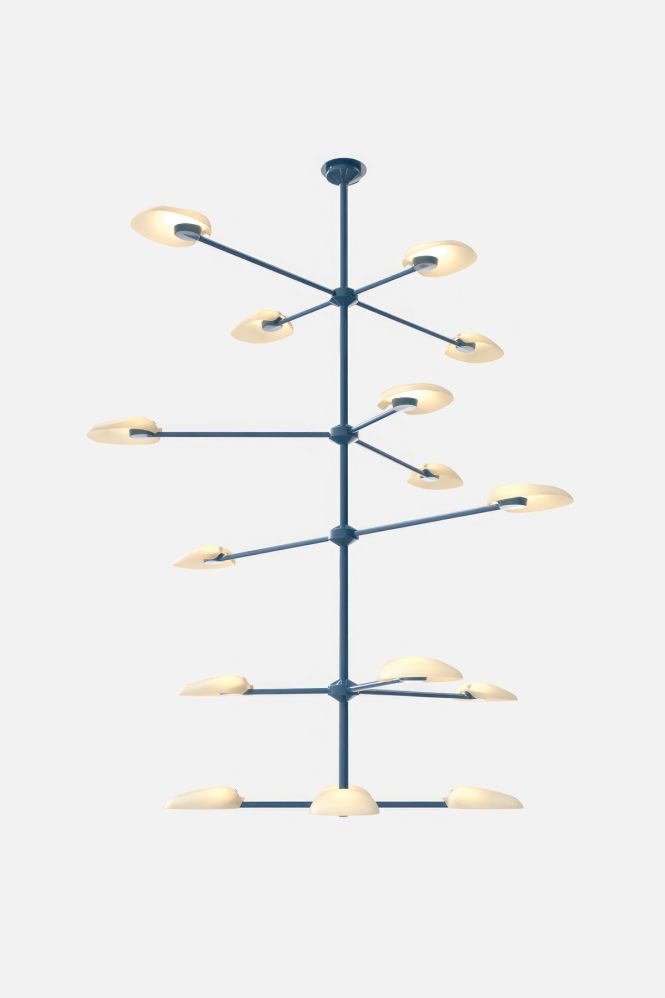Enduring Trends in Lighting Design
By Hannah Van Sickle | Fall 2023 | Design Feature
When it comes to illuminating interior spaces, there’s an emerging trend afoot—namely, the non-trend look. “Sometimes, you don’t want to be trendy,” says interior designer Ana Claudia Schultz, founder of the eponymous Rhinebeck design firm, modeling the power of being an outlier —especially when it comes to interior design. In the same way homeowners have been gravitating of late toward timeless furnishings, investing in lighting as art is suddenly de rigueur. Rather than specific styles cycling into or out of fashion, what is shifting, more fundamentally, is the mentality behind lighting—how it’s used and its role in spaces, its interaction with the both natural and built environment, and questions of sustainability.
“Everything in design should be functional,” says Schultz, outlining her most basic rule of thumb. “Beyond function, form makes some sort of artistic statement,” she says of everything from floor lamps to chandeliers, an ethos designer Michael Gilbride of Michael Gilbride Design in Germantown concurs with. “Whenever a client reaches out to me to solve a problem in their home, [it’s] usually lighting,” Gilbride says, emphasizing the oft-overlooked impact that lighting decisions—and, by extension, changes—can have upon an interior.
Lighting as Art as Personal Expression
“We are delighted to see lighting that tiptoes the line between functioning for a home and behaving like art,” says Jessica Lynn Williams, founder and principal designer at Hendley & Co. in Newburgh. In her design work, Williams continues to both see and source motifs that “nod to nature or insert a sparkly or glossy touch with hand-blown glass.”
Williams suspects lighting designers will continue to collaborate with artists whose distinctive practices result in fixtures that leave strict shapes and formats behind in favor of more sculptural forms. “If you want to have a big lighting moment—with a piece that makes a statement—sculptural lighting fixtures make for a good investment,” says Schultz.
Benjamin Davidson, cofounder and lead designer of Germantown-based lighting and home goods company Quittner, observes client enthusiasm for custom projects. “[Customization] results in interiors that are more personal to the homeowner and the house,” he says. He and his team find the increasing number of clients seeking modification of antique and vintage pieces, as well as entirely custom works, both fun and cost-effective projects that, when compared with “similar high-end fixtures and materials, aren’t exorbitantly expensive.”
The Move Toward Ambient Lighting
When pressed to choose a lighting trend, Davidson points to the resurgence of the humble wall-mounted sconce, which he says is having a moment. “People are embracing sconces again,” he says of a beautiful and functional fix for one of the biggest mistakes in illumination: over-lighting a space, especially with recessed lighting. “We encourage creating pools of light at different heights. Sconces are a great way to do this,” he says of these traditional fixtures, which though classically found in hallways and corridors can add decorative interest to myriad spaces.

Blue Green Works’ Shade Sconce is a recent favorite of designer Michael Gilbride.
Gilbride is presently obsessed with a pair from Manhattan’s Blue Green Works. “Their Shade Sconce, which looks like the cymbal for a drum thrown into a wall, works great as a bedside downlight or, when flipped upside down, as a spotlight,” he says of a design that feels modern while evoking a Grecian temple aesthetic. Similarly, Gilbride delights in the company’s wood sconces, which “have a perfect Mid-Century vibe while also being incredibly modern.” Ditto for plug-in pendants (and sconces, both perfect for renters) which, according to Williams, are also coming back.
“We are placing these in tucked-away spaces or breakfast nooks above a dining table where hardwiring isn’t available to us,” she says of another impending trend: that of designers considering—and possibly prioritizing—ambient lighting over the main light source, which harkens to a bygone era.
A return to the most basic of basics—something as simple as shadow—is equally coming back around. “It has long been a key part of lighting design that the best light is defined and deepened by its shadow,” says Davidson. Of late, this understanding is coming into wider circulation following years (if not decades) of builders flooding spaces with light that is static throughout the day. Lately, Davidson sees more designers embracing the movement of the sun by “designing lighting configurations that allow for shadows and pockets of light to move as the day progresses.” He is a fan of floor uplights akin to Quittner’s Lex, for exactly this reason: “As the sun sets, [the light source] becomes more noticeable, the dimming of the outdoors giving the illusion of it becoming brighter.”

Quittner Home’s LEX light.
The Past Always Comes Back
Suffering from pangs of nostalgia? A reemergence of the classics remains all the rage. “Accessories accumulated through time are coming back ‘into style’…in particular some really funky lights from the `80s,” Schultz says. Like fashion, design is circular, and this trend is spurred by the resurgence of vintage pieces like flower pot lamps (both of the pendant and table-top varieties) and pieces procured from a single material (say metal) from base to shade. And, as evidenced by Gilbride’s earlier shout out to his favorite wooden wall sconce, “Mid-Century always comes back,” Schultz says of an aesthetic that embraces minimalism and features natural materials in organic shapes.
Gilbride has also noticed the tinted glass of yore—beyond the traditional Murano—becoming somewhat ubiquitous right now. “Clients really dig a lot of antique pieces with an amber tone to them,” he says, which, given the relative harshness of LED bulbs, helps to render a warm-hued, soft effect while still achieving energy efficiency.
Sustainability for the Win
These days, sustainability is top of mind for designers and fabricators—both from a stylistic and an environmental perspective. Kingston-based lighting manufacturer RBW aims to hit both fronts, creating atmosphere with a focus on organic-leaning materials, as evidenced by the company’s most recent collection. Utilizing a new material in decorative lighting—a cement-and-wood-fiber composite—RBW’s Topo line gives the feeling of “simple, classic geometry along with an almost Terrazzo organic pattern,” says Director of Brand Marketing David Winton. The design creates what he calls “a moment of texture” and allows for myriad applications from walls to ceilings.
“When we think about our product roadmap, the first thing we are talking about—before trends, materials, or aesthetics—is sustainability,” Winton says. And, as much as RBW does design products suitable for sitting within multiple environments, he specifies “we’re always thinking about how our [next launch] can become, effectively, iconic.”

RBW’s Pilot 5-tier chandelier makes a dramatic statement in high-ceilinged spaced.
Sustainable and high-quality materials are enduring—and RBW takes the same approach to form. “We want products that will last,” he says, of why the company prioritizes creating stylish pieces to last a lifetime out of materials intended to last.
Gilbride sums it up: “One has to design everything with genius function masked by a luxurious design.” It’s that simple.
